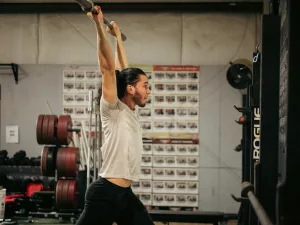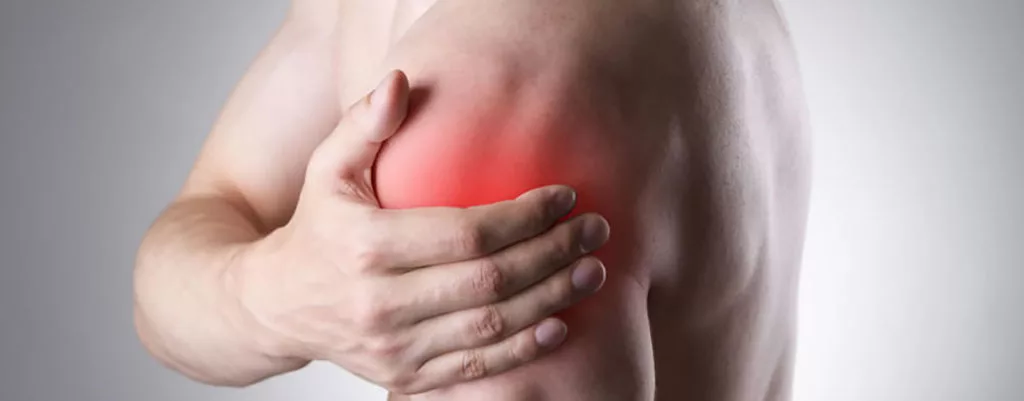Here is everything you need to know about an Evidence Based Pitching Program. Early development of healthy, high-velocity baseball pitchers necessitates a multifaceted strategy that integrates evidence based pitching program. An effective development program must include a full understanding of pitching biomechanics and the value of an effective strength and conditioning program. A dedication to utilize the most recent research and data is necessary for the implementation of such a program, as well as the involvement of coaches, parents, and medical professionals.
It is crucial to regularly assess and modify the program as necessary in order to implement evidence based pitching program properly. Quantitative data used to monitor progress, such as strength, power, mobility, velocity readings and injury rates, might offer insightful information about how well the program is working. A focus on injury prevention and appropriate recovery techniques can also reduce the chance of injury and keep pitchers active. It is possible to produce healthy, high velocity pitchers who can perform at their best throughout their careers by fusing the most recent science and data-driven methods.
Understanding the Biomechanics of Evidence Based Pitching Program
 The development of high-velocity pitchers depends on an understanding of pitching biomechanics. According to research, during the first stages of the pitching motion, pitchers who throw harder tend to achieve greater upper trunk rotation and generate bigger trunk angular velocities (Luera et al., 2020). A thorough grasp of biomechanics is needed to analyze the kinetics and kinematics of the pelvis and trunk. When analyzing a pitcher's delivery, it is important to take into account the kinetic energies and torques, peak angular velocities, and elbow and shoulder loads. Coaches and trainers can learn more about how to help pitchers enhance their pitch velocity by looking at the links between kinetic and kinematic variables and pitch velocities.
The development of high-velocity pitchers depends on an understanding of pitching biomechanics. According to research, during the first stages of the pitching motion, pitchers who throw harder tend to achieve greater upper trunk rotation and generate bigger trunk angular velocities (Luera et al., 2020). A thorough grasp of biomechanics is needed to analyze the kinetics and kinematics of the pelvis and trunk. When analyzing a pitcher's delivery, it is important to take into account the kinetic energies and torques, peak angular velocities, and elbow and shoulder loads. Coaches and trainers can learn more about how to help pitchers enhance their pitch velocity by looking at the links between kinetic and kinematic variables and pitch velocities.
A pitcher's health is significantly impacted by their pitching biomechanics, particularly if they are a young pitcher who is more prone to injury. Energy flow analysis was used in a study to show that developing energy flow throughout the body is essential for achieving high velocities and effective pitch delivery (Howenstein et al., 2018). Pitchers can attain high levels of performance with minimal joint stresses by maintaining effective pitching mechanics and maximizing the transmission of energy between body segments, thereby lowering the chance of injury.
Energy flow analysis is a tool that researchers can use to better understand how energy travels through an athlete's body while they are pitching. This method measures how energy is produced and transported across body segments. It also identifies the direction, mode, and effectiveness of energy generation and transfer through the kinetic chain. Ultimately, better velocity and a lower risk of injury in young pitchers can result from a knowledge of the basic mechanics of energy transfer via the kinetic chain.
The Importance of Physical Conditioning in Pitcher Development
 It is important to emphasize the value of physical preparation for pitcher development. In baseball pitchers, decreased lumbopelvic control has been linked to both injuries and poor pitching performance (Laudner et al., 2019). This suggests that building up your lower body is just as vital as building up your upper body. To enhance performance and reduce the danger of injury, the throwing motion demands perfect coordination and activation of the muscles and joints from both the upper and lower extremities. Power is generated in the lower extremity during the pitching motion and is then transferred to the upper extremities via the shoulder and elbow, to the hand, through the hips and trunk.
It is important to emphasize the value of physical preparation for pitcher development. In baseball pitchers, decreased lumbopelvic control has been linked to both injuries and poor pitching performance (Laudner et al., 2019). This suggests that building up your lower body is just as vital as building up your upper body. To enhance performance and reduce the danger of injury, the throwing motion demands perfect coordination and activation of the muscles and joints from both the upper and lower extremities. Power is generated in the lower extremity during the pitching motion and is then transferred to the upper extremities via the shoulder and elbow, to the hand, through the hips and trunk.
The research shows that when lumbopelvic control is compromised, the force applied to the shoulder and elbow during the throwing motion is increased. In order to ensure good mechanics and lessen stress on the upper extremities, it is essential to strengthen muscles like the gluteus medius, which keeps balance and proprioception by effectively controlling the lumbopelvic area. In order to reduce stress on the upper extremities, proper gluteal strength during the pitching motion contributes significantly to pelvic stability. In an effort to manage the lumbopelvic region during the throwing motion, pitchers must specifically strengthen the gluteus medius. Pitchers should also perform lumbopelvic control-focused exercises, that include the standing single-limb stance lumbopelvic control motion. These exercises are intended to identify and address lumbopelvic control deficiencies. To preserve appropriate mechanics and lessen stress on their upper extremities, pitchers should generally concentrate on strengthening not just their upper bodies but also their legs, pelvis, and core.
Injury Prevention and Recovery Strategies

In baseball, injury prevention and recovery techniques are essential to lowering the chance of injury and maintaining performance. Baseball's growing popularity and year-round nature have led to an increase in overuse injuries, and pitchers who throw more than eight months per year are at a higher risk of suffering serious injury (Norton et al., 2019). Therefore, in addition to restrictions on pitch count, a comprehensive strategy to injury prevention is necessary to allow players to engage in throwing sports without risk. Sports medicine professionals must be knowledgeable about the biomechanics of throwing to treat throwing athletes efficiently. Six parts make up the throwing motion, and deficits in any one of these phases can put more strain on the shoulder and elbow, sometimes resulting in injuries. As a result, it is possible to design exercises specifically for the muscle groups used at a certain stage of the throwing cycle.
To reduce the risk of injury, injury prevention techniques should concentrate on exercises that target the various throwing stages. Lift leg momentum, load position, tiple extension/separation, chest thrust/external rotation, internal rotation/pronation, and front leg stabilization are the six parts of the pitching delivery that I have defined in my practice. Each part localizes force to a different portion of the body, potentially causing damage. Sports-related injuries can also be attributed to variations in throwing technique (Sutter et al., 2018). Therefore, sports medicine experts should create tailored exercise regimens to enhance muscular activation throughout each phase of throwing while lowering the risk of injury. A well-thought-out injury prevention program should start with a thorough evaluation of muscle activation and movement patterns, then move on to the creation of an exercise regimen that focuses on any weak or asymmetrical areas found.
In conclusion, creating healthy, high-velocity baseball pitchers involves a multifaceted strategy that takes into account the lower body, core, and upper body. Evidence-based research indicates that the lumbopelvic area and the rest of the kinetic chain should be properly conditioned and strengthened to reduce injury risk and improve performance. Pitchers should also receive instruction in good pitching mechanics and be monitored to make sure they don't throw more pitches than is advised.
Coaches and healthcare professionals can use the knowledge at hand to create efficient injury prevention and rehabilitation programs even though the research is still in its early stages. Young pitchers can build healthy, effective, high-velocity pitching mechanics with the assistance of coaches and medical professionals by incorporating workouts and training plans that focus on each stage of the throwing cycle and fixing any inadequacies. Continuous monitoring and modifications can also aid in spotting future problems and solving them before they worsen. The ultimate objective should be to assist young pitchers in realizing their potential while lowering their risk of harm and assuring their success and long-term health with an evidence based pitching program.
3X Pitching Velocity Program
Reference
Howenstein, J., Kipp, K., & Sabick, M. B. (2018). Energy flow analysis to investigate youth pitching velocity and efficiency. Medicine & Science in Sports & Exercise.
Laudner, K. G., Wong, R., & Meister, K. (2019). The influence of lumbopelvic control on shoulder and elbow kinetics in elite baseball pitchers. Journal of shoulder and elbow surgery, 28(2), 330-334.
Luera, M. J., Dowling, B., Muddle, T. W., & Jenkins, N. D. (2020). Differences in rotational kinetics and kinematics for professional baseball pitchers with higher versus lower pitch velocities. Journal of applied biomechanics, 36(2), 68-75.
Norton, R., Honstad, C., Joshi, R., Silvis, M., Chinchilli, V., & Dhawan, A. (2019). Risk factors for elbow and shoulder injuries in adolescent baseball players: a systematic review. The American journal of sports medicine, 47(4), 982-990.
Sutter, E. G., Orenduff, J., Fox, W. J., Myers, J., & Garrigues, G. E. (2018). Predicting injury in professional baseball pitchers from delivery mechanics: a statistical model using quantitative video analysis. Orthopedics, 41(1), 43-53.




